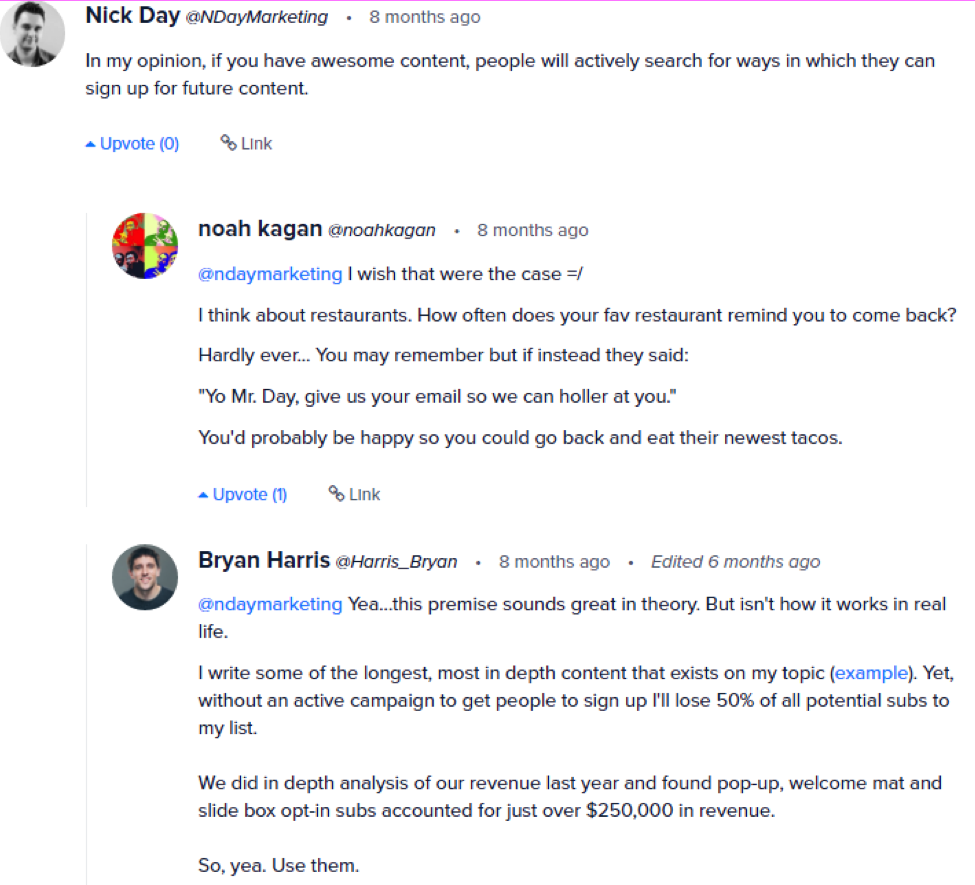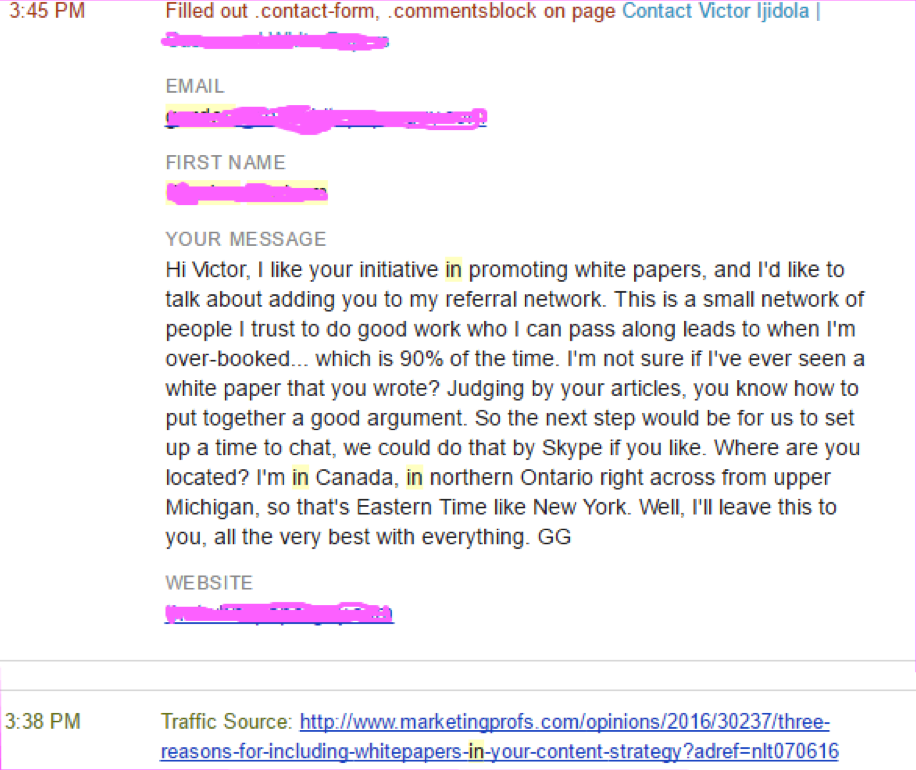ProBlogger: Your Niche Is A Small Village: Here’s How To Become Well-Known In it by Marketing Yourself | |
| Your Niche Is A Small Village: Here’s How To Become Well-Known In it by Marketing Yourself Posted: 16 Jan 2017 05:00 AM PST This is a guest contribution from Victor Idjola. Sometimes, the way many startups become very well-known after a period of oblivion makes it feel like the industries we operate in are actually small villages. And they really are! Have you noticed? Almost every new company that manages to build a great product and use some marketing tactic(s) that works ends up making the headlines within a couple of months. It's not always like that. But it happens many times. Take Buffer, for example. They got 100,000 users in 9 months. That's a lot of subscribers for a startup. Source: Search Engine Watch We also heard of how Groove got 5,000 subscribers in just five weeks. And those are just two examples, there are several others. So you write a number of pieces of great content and everyone in your space begins to know who you are and what you do. But how can you use content marketing to quickly become well-known like these successful startups? Here are five tips that work great: 1. Use tactics that have worked (and still work) for other businesses.You need proven strategies to make your content reach your target audience FAST. I mean; strategies that other people have been praising because they get returns from them. Sure, you could have techniques that you feel would work. But do you really have the time to start testing tactics that might fail? So what happens if they fail? You'd have wasted time and other resources. We'll use another guest blogging example. This tactic has been working for many brands for quite a long time, but Alex and his team at Groove were hesitant in adopting the strategy. They weren't using it for about two years. But when they finally did, they started getting amazing results––like reaching over one million users (via guest blogging alone). Source: GrooveHQ Then they quickly figured that they should have been using the tactic sooner. In Alex's words, "If we had known the power that guest posting has two years ago, we would've been doing this a lot sooner." It's okay to have your new ideas that you want to try out, but it's better that you start out with proven tactics (like guest blogging, PPC, etc.) first. For my business (Premium Content Shop), I mainly use guest blogging––because I've seen it work for several businesses. And as a freelance writer, I figured it's one of the fastest, inexpensive and most effective techniques I can use to grow my business. 2. Tell a lot of stories.The type of content that used to work when blogging and content marketing were still a shiny new toy––just a few years ago––don't really work so well anymore. Today, competition has gone quite fierce in content marketing. Everyone is doing content today, and so people are increasingly not having time to waste on content that is boring. People prefer to read stories. When you begin to tell stories to back your opinions up, you take your audience to a new level where they begin to see your ideas as something they have to buy, IF they want to achieve the success or avoid the tragedy in the stories you share. Kim Garst puts it more succinctly in a post on her blog: "Think of the last story that captivated you. Were you interested in the characters? Did you find yourself relating to the protagonist? Did you follow her as she went through a crisis, hoping she'd make it out okay in the end? And when the crisis was finally behind her, did a part of you rejoice? That's the power of good storytelling." Take the VideoFruit blog for example; the average post there gets about 25 comments. The blog is run by Bryan Harris, and guess what? He writes nothing but stories. All the time. As of the time of writing this article, here are the latest posts on VideoFruit (notice the number of comments):
These posts are both stories, and you can see how much they engage readers through the number of comments they generate. The same goes for the Groove blog. They write stories and case studies virtually all the time too and today they've hit 100,000 subscribers. Most pieces of content that are stories tend to perform better than just sharing of tips. The most popular post on Problogger was written by Jon Morrow, and it's a story. Are all these really coincidences? I think not. Telling stories will supercharge your engagement rate and even spread your name. And that's why various surveys, like this one, have proved that case studies are the most effective types of content. Take Robert Mening (the guy behind WebsiteSetup.org), for example, he flaunts his readers' testimonials right at the top of his homepage: Use tools that can bring out the best in your contentContent is king. That's still true to this day. But you're mostly aware by now that content isn't all it takes to achieve success in any industry. This is something that most brands that succeed with content marketing know. And that's why you see them spending thousands of dollars on marketing tools that can bring the best out of their content. For example, in a recent thread on Inbound.org, a commenter says "In my opinion, if you have awesome content, people will actively search for ways in which they can sign up for future content." And really, it sounds true. But that truism is only in theory. In real-life, you have to use sign-up forms to actually ask people to submit their emails so you can send them your future content. Experienced content experts, Noah Kagan and Bryan Harris, explained to the commenter how it really works: Source: Inbound.org And sign-up forms are just one example. You need to be using every tool you can get your hands to bring the best out of your content. 4. Learn from others, but be yourself.You can't be another HubSpot. You can't be another Moz either. In fact, in my own experience, the more you try to be someone you're not, the worse you get. Be you. Be transparent. Which word count (for instance) works best for you? We know expert online marketer Neil Patel writes really long posts (about 3000 words each) on his blog. It works for him a lot. But is nailing your point in 1000 – 1500 words what works best for you? Yes? Then, by all means, stick to that. In fact, one of the most respected experts in the marketing today—Seth Godin—writes an average of 100-300 word posts on his blog today and he still gets a lot of readers. Here's a recent post on his blog that got 2,100 Facebook likes and a sum of 809 shares on LinkedIn and Google+. The post is just 96 words long. Not every reader has the luxury of time to spend hours with Neil's post. So this type of readers might prefer posts in the 1k – 1.5k word count mark. Neil is only able to attract readers who have the time to consume long-form posts. And they read his post because they're happy to. That's Neil's style, you need to find yours. Who says you won't succeed with short form content? Another example is MarketingProfs. They accept not more than 700-word posts on their opinion section. And their content still gets shared a lot. In fact, after writing my first guest post (of 700 words) there, I got someone asking for my writing services. So it's not really about word count. Just stick to what works for you. However, just so you get on the good side of google, you should make sure your post is at least 1,000 words. Another aspect of being yourself is your tone.What kind of voice do you love speaking or writing with? Is it a casual tone? A professional tone? Whatever kind of tone it is, there are readers who would love you for it. You don't have to copy how someone else talks or writes. Does this mean you can't learn a writing style? Definitely not. But you should ensure that you're learning a writing style that resonates with the way you want to write. That is, if you like to write in a conversational tone, you can learn from an expert who writes in the same tone and is successful with it. The person you're trying to copy succeeds because he's found his style. You need to find yours. 5. Persistence.No great achievement is possible without persistent work.––Bertrand Russell This is almost more important than every other tip in this post. Bertrand is late, but his quote about persistence is still true to this day. What did it take for Buffer to reach 100,000 users in 9 months? Guest blogging? No, it took guest blogging plus persistence. They had to be persistent for those 9 months to reach a hundred thousand users. In Leo's words, "It's been something that was very gradual, though. Within the space of around 9 months, I wrote around 150 guest posts. Of course, the early ones barely drove any traffic and only very gradually did things improve…" In conclusion So if it’s traction you want, it’s traction you have to work for. Look around your niche and be as familiar to them as the milkman is to a small village. Pe persistent, be seen, be useful. Victor Ijidola is a freelance business writer (for hire) and the founder of Premium Content Shop. He specializes in business and marketing related topics but branches out into other topics occasionally. His work has also appeared on sites like The Next Web, Inc.com, etc. The post Your Niche Is A Small Village: Here's How To Become Well-Known In it by Marketing Yourself appeared first on ProBlogger. |
| You are subscribed to email updates from ProBlogger. To stop receiving these emails, you may unsubscribe now. | Email delivery powered by Google |
| Google Inc., 1600 Amphitheatre Parkway, Mountain View, CA 94043, United States | |












